Bonjour, and welcome back to the SCBWI Official Blog!
My name is Justin, and I am a pre-published author/illustrator and professional performer in Brooklyn, NY. Although I am a professional dancer by trade, I have always written and drawn, almost always lost in the imaginary worlds of my mind.
Graduate of Montclair State University with a BFA in Dance and a Minor in Art Studio & Design (Illustration), I now perform professionally, nationally, and internationally.
I've been fortunate to have great success in the theater world, and I hope to continue by passing on my knowledge to the younger generation. Nowadays, I find myself teaching and choreographing more, which has brought me much joy.
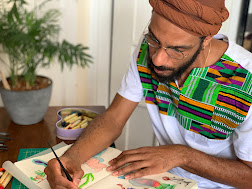
This is my LAST blog post as a guest blogger! It has been just a wonderful time exploring topics and ideas. We discussed the "
Art of Discipline," how I go about my "
Portfolio Planning," and the "
Creative Mapping" I follow to navigate my imagination.
But for my final post, I want to write about the internal state of being as an artist:
"Reconnecting to Your Inner Self"
Born in Staten Island, NY, I was raised in the projects by my mother, a West African immigrant who moved to America just before the civil war broke out in her home country. Growing up, we struggled, but there was much light in our home, for what we lacked in access and resources, I found in books and art. I was a bookworm, and unfortunately, I became sort of the outcast in the neighborhood because of it.
Drawn to storytelling by my great-uncle, a performer of our traditional culture/customs, I liked exploring different forms of artistic expression to understand the world around me. I constantly wrote stories, drew the characters, and even performed as them in plays for my relatives. Being around other Black and Brown kids who didn’t see value in reading and creativity confused me, but I kept dancing to my own beat. Sometimes, all by myself.
But soon, I started influencing the younger kids while playing pretend and creating. You would often see us playing "Hogwarts" or Basketball Court Quidditch on skates. I was even the sole proprietor of Spy University, an international "espionage school" for young, gifted inner-city kids who liked spying on their neighbors. Thanks, Scholastic and Harriet the Spy.
I would constantly create for the sheer
love and necessity of it. No other reason. Always creative as a child, but didn't know that you could make it a career, your life's purpose.
Today, I perform/draw/write, and create because of those days. I'm proud of being a good influence on the younger kids, and I've come to realize that art really can save lives. It saved mine.
All of the opportunities I've been given, from flying to Beijing to perform to dancing on the Kennedy Center stage, have been through art and storytelling.
So when I feel lost, I go back to that North Star, which I like to call "Baby Justin."
Most people my age have doubts, anxieties, and insecurities and in order to find my way back, I have developed a few rituals that I consider:
Pillars of my Creative/Spiritual Life
They are my Animal Spirit Tarot Deck, my Q&A for the Soul, and my Journal.
These are the tools for my centering, reflecting, and reconnecting.
The Wild Unknown Animal Spirit by Kim Krans I start with a tarot card pull.
I discovered this deck when I was on a theatre contract, and every morning before I went to the beach to meditate, I would draw a card. It is an amazing deck that serves more as an affirming spiritual guide, unlike more common decks.
When I returned home, I bought my own, and I've been drawing daily cards for over seven years. It brings me inspiration, peace, and emotional guidance.
So, once the cats are fed and coffee brewed, I sit at my kitchen table, where I keep all of the aforementioned items stacked and ready and shuffle away.
Q&A for the Soul
This book was a gift during a Secret Santa party, and it's the gift that keeps on giving. This book asks me the same questions every day for five years. They can range from simple questions like "What one thing have you learned today?" to "How do you show mercy?"
I am coming up on the end of my fourth year, and it is so eye-opening when I reread what I've written previously—BUT only after I've written the current day's entry. NO cheating :)
I usually document my tarot card pull for the day, and I love it when I get the same card on the same day, like two years ago.
This form of reflection shows me my patterns, where I've grown, and where I've been—positively or otherwise.
Journaling
Sometimes I expand upon those prompts or even delve more into the tarot card I drew. OR just free-write, really.
I've kept a journal for most of my life, writing poetry, thoughts, and even songs on its pages. Every so often, I revisit them and ooph, was I angsty?! But it' s what I do, to keep my mind from wandering too far from home. Sometimes, I spiral (don't we all?), and when I need a grounding, this is where I find it. I'ma huge advocate for journaling. And just look at how cute my notebook is?! Why wouldn't you want one?
So, in the spirit of reconnecting with my inner self, I'd like to journal a bit here.
So let's start with a "PULL," shall we?
What is your philosophy as an artist? Snake (Guardian of Unawakened Magic & Creative Potential)
My philosophy is to create to connect others, to give others new perspectives and new stories to discover. As an artist, I want to continue to expand, to build upon my knowledge, to go out into the world to expose myself to new work and ideas. Always seek out ways to tap into your "unawakened magic," which is usually waiting for you in the wings if you look out for it.
And much like the "Spider" card, a great way to tap into this is to be playfully creative. I know I can get into my head and start stressing whether my art is enough, whether the colors are correct, whether the composition is good, or if my technique is right... All of these thoughts block you from that creative potential.
So, as the Snake card says:
In Balance: prosperous, creative, charismatic
Out of Balance: starts and stops many things
To Bring into Balance: meditation
Bee (Earnest, Hardworking, Democratic)
“Work steadily and thoughtfully." My mission is to work hard, never give up, and stay connected to my goals. The "why" is important to hold on to. Be process-oriented, not results-oriented. Even in the dark, continue to move forward.
It is my goal to be someone who builds the confidence and emotional literacy of all children. I want children to see kindness, vulnerability, and empathy as strengths, not weaknesses. And in exploring this in my work makes it bigger than me, and serves my community.
To do so, I must work tirelessly and joyfully toward creating AND completing my projects, with earnestness and sincerity.
So, as the Bee card says:
In Balance: content, active, vibrant
Out of Balance: overworked, annoyed
To Bring into Balance: mini-vacation
Spider (Creator of Prosperity through Life’s Work)
This might be my favorite card in the deck besides the "Whale." (Ocean, 'member?)
The card states, “The Spider is an ingenious creator. Its greatest gift is weaving the thread of dharma into a vast intricate web that supports the Spider (and those around it) both financially and spiritually.”
This idea of purpose and creativity has always rung true for me. I create art because I love people, I love history, I love what connects us, culturally and spiritually. I absolutely love connecting to my culture and various cultures around the world through art. Art preserves the human experience, and this intrigues me.
Art has been the tool to record, communicate, and express ourselves, and that thought fills me with purpose. My art and my stories are not just books for entertainment (though I hope they will be so) but to document and communicate a small sliver of the beauty, uniqueness, and wondrous depth of the human tapestry.
I go to museums to reconnect to this truth. It makes me feel small and reminds me I am a part of a bigger picture. Like a spider, I want to use creativity to weave the thread of my life's purpose and my life's work. I've known that since I was a child, even if I didn't have the vocabulary to share it at the time.
So, as the Spider card says:
In Balance: Appreciative, enthusiastic, prosperous
Out of Balance: discouraged, tired, forlorn
To Bring into Balance: playful creativity
So...
What new story begins today?
Golden Egg
Message at the Center of the Heart, The Unstruck Sound
This card represents the Heart Chakra, which governs love, gratitude, and tenderness toward others, but also to the self. This card is about listening to the message from the center (the heart). "The sound cannot be heard, nor the message discerned until we retreat from the noise of modern day life.”
If I listen, I immediately hear
The Little Mermaid. Period. It is my security blanket, my inspiration, and how I tune back into the message at the center. Not just the Disney version but all versions.
Growing up as a young black boy, I never felt I could express my love for mermaids. But it was what my heart wanted and who I was in my ways.
It connected me to something so much deeper and bigger, to the point that it would take hours to truly unearth why I love mermaids.
I mean, from the moment I could hold a crayon, I drew mermaids. On the inside cover of all of my picture books. On scrap pieces of paper. On any surface that I could lay my hands on without getting into trouble. I drew them WAY before I ever drew humans. But I was afraid to express this love of mine.
So I would draw mermaids and mermen, hide them in a tin “Ninja Turtles” lunchbox, and stash the box away behind my TV unit.
That secret mermaid civilization had supplied hours of fun, peace, and acceptance.
Now I don't hide this love of mine.
Not hiding my true self. That is the message of the heart.
Hey, being an artist can be hard.
It is vulnerable work but such IMPORTANT work.
So, I write for the child I was who struggled to navigate a world that did not see him. My greatest wish is to be a true storyteller OF and FOR the world by adding to the legacy of BIPOC stories and characters, paying tribute to ancestral influence, and helping facilitate change for the future.
And that's all folxs!
Wow! What an awesome month getting to share with you all! It was so special, and HUGE THANKS to Lee for inviting me! It's been a blast! Until next time!








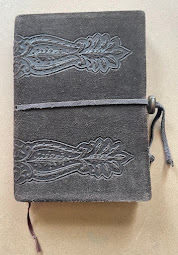



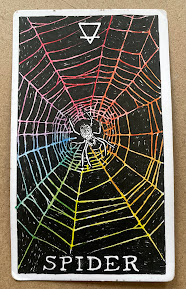









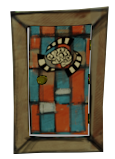
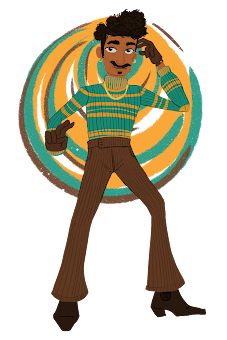





.jpg)





















